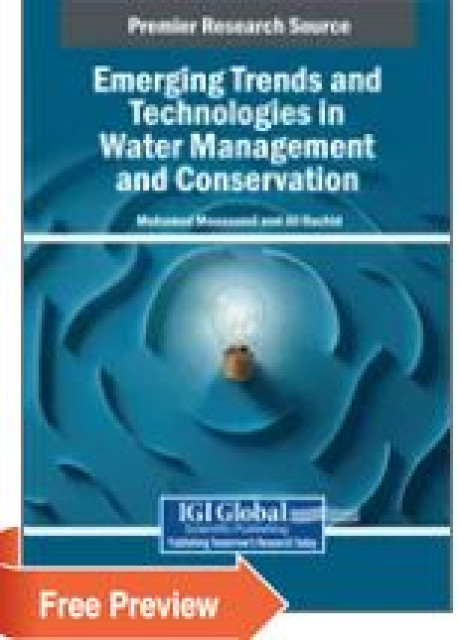 Emerging Trends and Technologies in Water Management and Conservation
Emerging Trends and Technologies in Water Management and Conservation
IGI Global
December 06, 2024
Water is a precious and vital resource for human survival and well-being. However, increasing populations has led to a growing demand, resulting in excessive water use for domestic, agricultural, commercial, and industrial purposes. This overuse, combined with the effects of climate change and pollution, jeopardizes environmental sustainability and sustainable development. Faced with these challenges, it is imperative to adopt innovative approaches for the treatment, management, and preservation of water resources that go beyond conventional methods. Further exploration into these areas may ensure equitable access to high-quality water and safeguard a sustainable future for future generations.
Emerging Trends and Technologies in Water Management and Conservation provides a comprehensive exploration of the latest developments in emerging trends and technologies applied to water management, treatment, and conservation of water resources. It highlights the most significant trends in this field, with a primary focus on digital water management and the application of artificial intelligence (AI), the Internet of Things (IoT), and intelligent technologies. This book covers topics such as environmental science, digital technology, and water purification, and is a useful resource for environmental scientists, civil engineers, computer engineers, conservationists, academicians, and researchers.
See publication
Tags: Climate Change, Emerging Technology, Sustainability
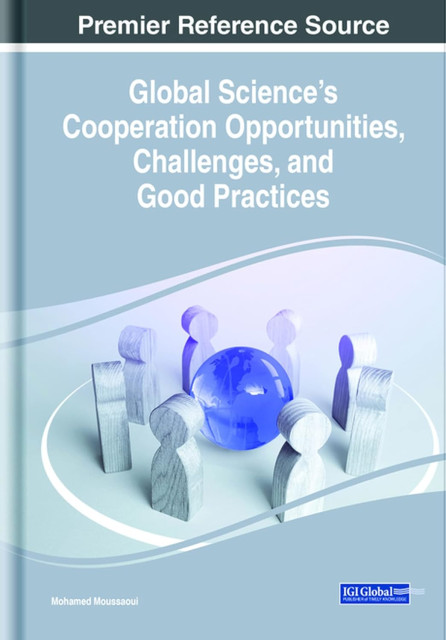 Global Science’s Cooperation Opportunities, Challenges, and Good Practices
Global Science’s Cooperation Opportunities, Challenges, and Good Practices
IGI Global
July 24, 2023
Science diplomacy gives possibilities for international diplomacy and science policy to collaborate to more directly address social and global challenges, such as successful diplomatic engagement, international scientific coordination, and policy coherence in response to the COVID-19 pandemic. However, most academic scientists lack policy process training, networking opportunities with science policymakers, and the capacity to use their expertise in the field to advance policy or diplomacy. These barriers limit scientists' research impact, inhibit science-policy relations, reduce science recommendations, and restrict university engagement in national and international contexts. The origins of science diplomacy have yet to be closely examined, and its current format does not give a clear understanding of how it concretely translates into science policy actions.
Global Science’s Cooperation Opportunities, Challenges, and Good Practices provides a comprehensive overview of science diplomacy and its evolution in history and analyzes the ways in which politics, science, and diplomacy intertwine. The book also provides a critical review of science diplomacy by exposing its limitations in addressing global challenges and by reflecting on the specific questions relating to the adaptation of the science diplomacy concept to the context of the Global South. Covering key topics such as climate change, foreign policy, and energy consumption, this premier reference source is ideal for policymakers, government officials, politicians, industry professionals, researchers, academicians, scholars, practitioners, instructors, and students.
See publication
Tags: Climate Change, International Relations, Risk Management
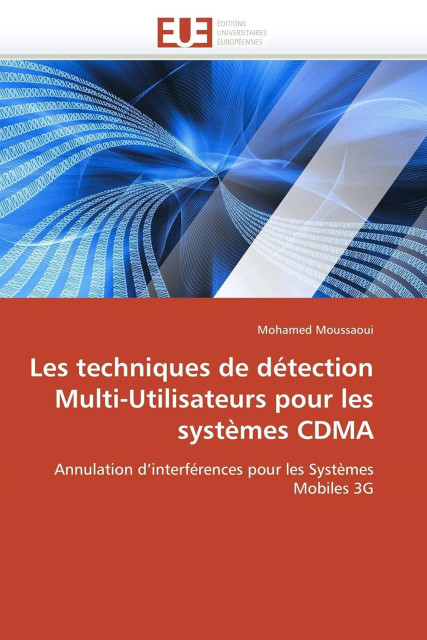 Les techniques de détection Multi-Utilisateurs pour les systèmes CDMA: Annulation d'interférences pour les Systèmes Mobiles 3G
Les techniques de détection Multi-Utilisateurs pour les systèmes CDMA: Annulation d'interférences pour les Systèmes Mobiles 3G
Editions universitaires europeennes
May 03, 2011
La complexité du récepteur optimal de Verdu pour le système CDMA augmente exponentiellement avec le nombre d'utilisateurs, de sorte que ce récepteur devient difficilement réalisable. Dans cet ouvrage, nous analysons les diverses structures de récepteurs multi-utilisateurs proposées dans la littérature, en insistant sur leurs principales caractéristiques. Par la suite, nous considérons une structure particulière, le récepteur d'annulation parallèle d'interférence à plusieurs étages(PIC). La nature parallèle de l'algorithme est facilement exploitable dans un environnement de multitraitement. Ceci le rend extrêmement attrayant pour les systèmes 3G. L'utilisation d'un estimateur du type filtre adapté, a comme conséquence l'apparition d'un biais dans l'amplitude estimée en sortie du second étage, particulièrement dans le cas d'un système chargé. Ce biais dégrade les performances en terme de taux d'erreur par bit (TEB) du système. Nous proposons alors une approche originale de faible complexité pour réduire le biais.
See publication
Tags: Emerging Technology, Telecom
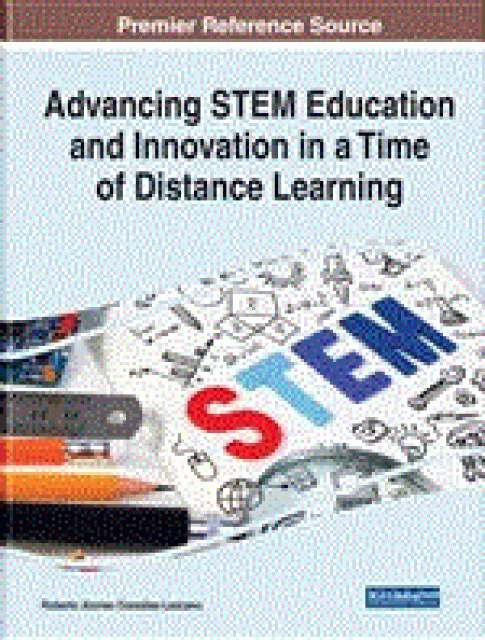 Frameworks for Pedagogy, Methodologies, and Technologies in Distance Learning Processes
Frameworks for Pedagogy, Methodologies, and Technologies in Distance Learning Processes
Advancing STEM Education and Innovation in a Time of Distance Learning/IGI Global
February 12, 2025
Distance learning is one of the promising areas of ICT technologies that can offer unprecedented opportunities for education more efficaciously than any other manner, delivering other opportunities to enhance skills, knowledge, qualifications of students, and assuring self-education. How can we form these digital learning environments so they're founded on particular epistemologies or knowledge bases? What is an essential pedagogical framework for web-based teaching and learning? This chapter mainly presents the challenges of distance learning caused by the obstacles of distance learning's integration. It provides readers with an overview of learning theories relevant to the epistemological and pedagogical aspects down to their specific application to distance learning. The current state of the art for distance learning models based on pedagogical objectives will be presented. Finally, this chapter tackles some of most widely-used instructional design models, defines their principles, and offers a series of recommendations to enhance creative thought processes.
See publication
Tags: Design Thinking, EdTech, Education
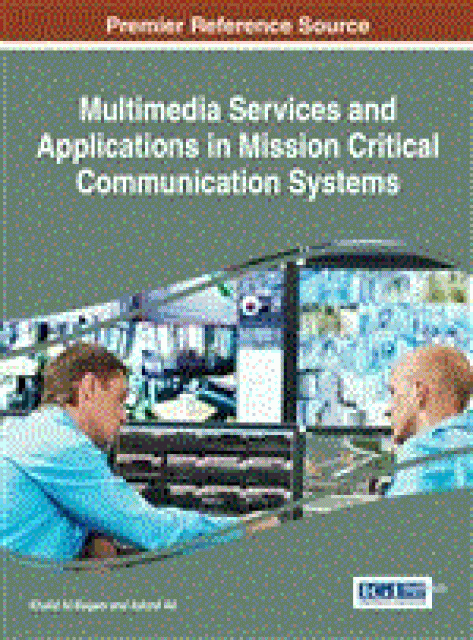 Advanced Retransmission Protocols for Critical Wireless Communications
Advanced Retransmission Protocols for Critical Wireless Communications
Multimedia Services and Applications in Mission Critical Communication Systems/IGI Global
February 12, 2025
This chapter provides background about Hybrid Automatic Repeat reQuest (HARQ) protocols. First, the critical situations that may be faced by wireless communication systems especially cellular mobile technologies in case of very noisy radio channels are introduced. Particularly, the chapter introduces the HARQ protocols, their main constituent components as well as some related application areas. Then, the state-of-the-art of HARQ protocols is presented. The next section explains the three basic ARQ protocols. Then, the different HARQ types are detailed. Then, a mathematical model of type II HARQ based on Rayleigh fading channel is provided. This analytical analysis is followed by a discussion of the throughput which is one of the most interesting metrics used to measure the performance of HARQ systems. The readers can find in the next section a description of the HARQ systems architecture where 3GPP LTE is used to illustrate and explain how such systems operate. Finally, the last section concludes the chapter.
See publication
Tags: Emerging Technology, Engineering, Telecom
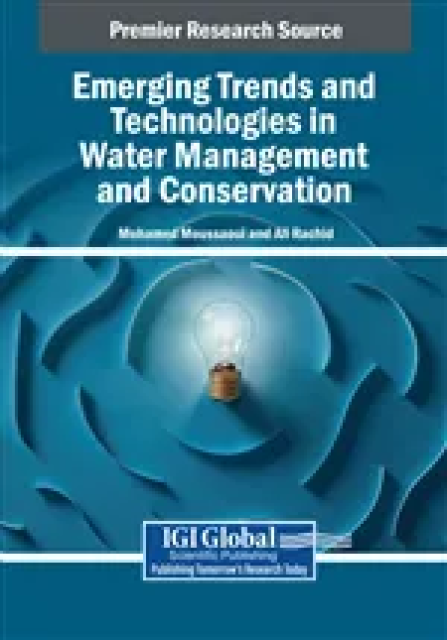 Digital Water Transformation: Technologies, Opportunities, and Challenges
Digital Water Transformation: Technologies, Opportunities, and Challenges
IGI Global
February 10, 2025
Water is increasingly becoming a valuable and scarce resource. Population growth has significantly driven up demand, leading to the over-exploitation of water across domestic, agricultural, commercial, and industrial sectors. This excessive consumption, compounded by the effects of climate change and pollution, jeopardizes the long-term sustainability of our environment. To address these challenges, it is essential to fundamentally rethink traditional approaches to water management, treatment, and conservation.his chapter explores the transformative potential of digital technologies in water management, particularly within the emerging framework of Water 4.0. It examines key innovations such as cyber-physical systems (CPS), the Internet of Things (IoT), artificial intelligence (AI), digital twins, big data analytics, advanced leak detection, geographic information systems (GIS), and automation, all of which are reshaping water management practices. These technologies enhance monitoring capabilities, provide predictive insights, and enable real-time data analysis, thereby improving system efficiency, reducing water losses, and supporting informed decision-making. The chapter also discusses the challenges and risks associated with the integration of digital technologies, including cybersecurity vulnerabilities, concerns over data privacy, and the necessity for robust regulatory frameworks. Finally, it outlines future research directions and advancements in digital water management, highlighting the importance of continued innovation for sustainable water use.
See publication
Tags: Climate Change, Digital Transformation, Emerging Technology
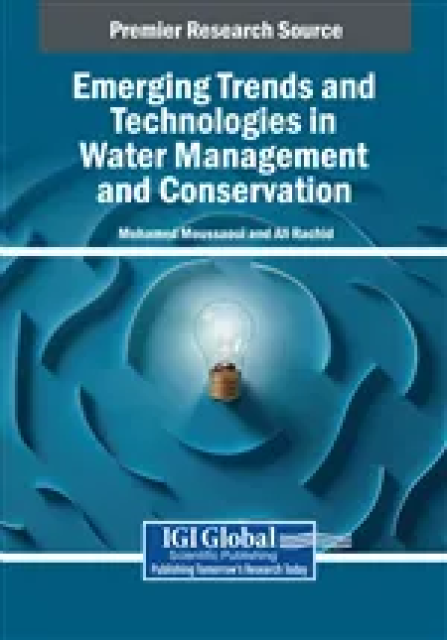 Water Governance and Management in Morocco: Towards a Sustainable and Ecological Model
Water Governance and Management in Morocco: Towards a Sustainable and Ecological Model
IGI Global
February 10, 2025
According to the UN, by 2030, water demand will have exceeded global production by 40%. Forecasts for Morocco estimate that 80% of its water resources will be lost over the next 25 years. According to the HCP (2020), the potential of Morocco's natural water resources is estimated at 22 billion m3. According to current estimates, the average per capita supply of fresh water per year currently does not exceed 650 m3. Depending on the uncertainties related to the water issue, Morocco has set up an institutional and legislative governance mechanism! However, these structures lack financial means and human resources. This chapter will attempt to take stock of the water situation in Morocco by examining the available sources, the pressures exerted and will question the policies and mechanisms of water governance and management, Finally, the chapter will propose solutions and future opportunities for a better sustainable and competitive governance of water resources.
See publication
Tags: Climate Change, Risk Management, Sustainability
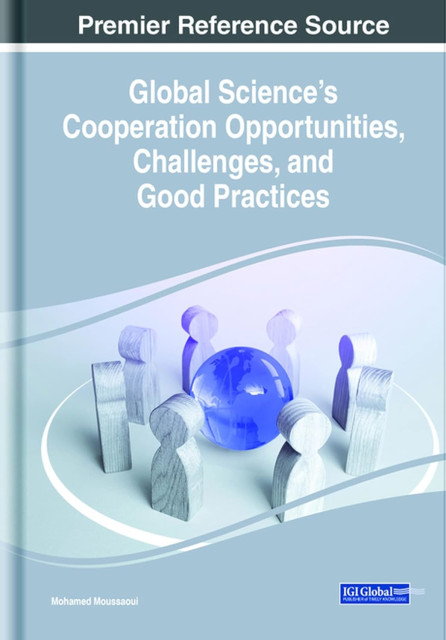 Building Bridges Through Science Diplomacy in the Mediterranean: Speaking a Common Language
Building Bridges Through Science Diplomacy in the Mediterranean: Speaking a Common Language
IGI Global
February 10, 2025
This chapter will explore the various aspects of science diplomacy in the Mediterranean region, with a particular focus on the merging of political frameworks to strengthen it. The chapter will begin with an overview of science diplomacy in general and its importance in the Mediterranean region. It will then delve into the political frameworks that exist in the region and how they can be merged to create a more robust science diplomacy framework. This will involve examining key actors such as the European Union and its Southern Mediterranean neighbourhood. The chapter will then discuss the challenges that the Mediterranean region faces in achieving a successful science diplomacy framework. Finally, the chapter will look at the emerging programs for science diplomacy in the Mediterranean and their potential to enhance scientific collaboration and promote regional stability. Overall, the chapter will provide a comprehensive overview of science diplomacy, its challenges, and its potential for promoting cooperation and stability in the Mediterranean region.
See publication
Tags: Climate Change, Ecosystems, International Relations
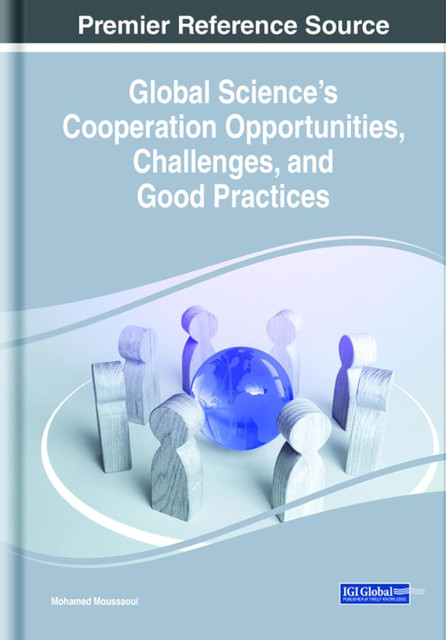 Rethinking Natural Resource Development: A Sustainable and Equitable Approach to North-South Relations
Rethinking Natural Resource Development: A Sustainable and Equitable Approach to North-South Relations
IGI Global
February 10, 2025
Environmental changes have accelerated in recent years. We are experiencing the sixth mass extinction. In its report, the MEA concludes that current human activity prevents the ability of ecosystems to sustain future generations for granted. Nowadays, the preservation of biodiversity has taken a notorious place in the diplomatic registers. Finding a solution to this socio-environmental multifaceted problem is at the core of the concept of sustainable development (SD) advocated by science diplomacy, which has become essential to address tensions and conflicts between Global North and South for management of the environment and natural resources. This chapter will address, from angle sustainable development perspective, the multiple relationships complexity between the countries of the North and the South to solve the environment-natural resources-biodiversity challenges, and then explore various approaches and alternatives to boost the natural resource development in order to preserve biodiversity.
See publication
Tags: Ecosystems, International Relations, Sustainability
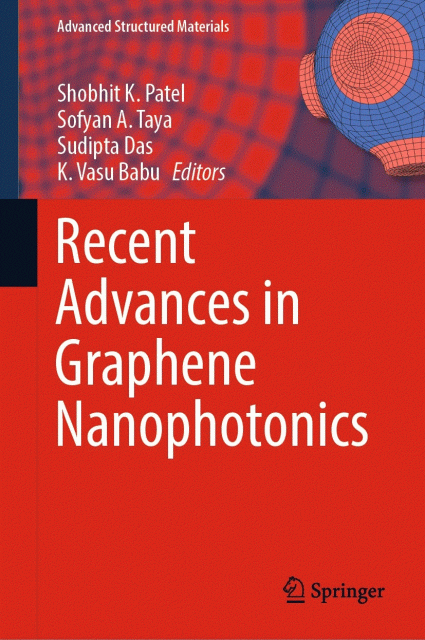 High-Performance Metric of Graphene-Based Heterojunction LEDs and PDs in Visible Light Communication Systems
High-Performance Metric of Graphene-Based Heterojunction LEDs and PDs in Visible Light Communication Systems
Recent Advances in Graphene Nanophotonics /Springer
May 21, 2023
Due to the considerable attention in GaN-based semiconductor materials such as large-size, low-cost amorphous SiO2 substrate, high-frequency, and efficient energy design with a low level of light sources, there are more applications in optoelectronics components, such as light-emitting diodes (LEDs), laser diodes (LDs), and indium gallium nitride (InGaN)-based photodetectors (PDs). The high bandwidth of LED transmitters and the high signal-to-noise ratio (SNR) of PDs receivers have great advantages in visible light communication (VLC) systems. Nevertheless, the low data rate speed influences the application of GaN-based LEDs and InGaN-based PDs which have a traditional structure in VLC systems. Given its excellent physical and chemical characteristics, graphene is an attractive material for LEDs and PDs technologies. Combining graphene (Gr) with other materials such as InGaN or GaN can further eliminate the shortcomings of graphene and lead to high-performance Gr/InGaN-based LEDs and Gr/GaN-based PD heterojunctions. It finds that the application of metal nanorods with graphene gap layers by metal-organic chemical vapor deposition (MOCVD) as monolayer Gr (M-Gr) or three-layer Gr (T-Gr) can make a perfect optoelectrical property. The T-Gr/GaN LEDs and T-Gr/InGaN PDs exhibit high responsivity. Furthermore, nanophotonics is a significant field in which a VLC modulator provides various optical device applications employing single-photon devices, quantum communications, advanced plasmonics, and electro-optic modulator architectures. This is due to the use of high-quality GaN or InGaN growth layers and the limited density of T-Gr states. The T-Gr/GaN LEDs and T-Gr/InGaN PDs have a rapid response time and an excellent responsivity, respectively, and high-speed modulation capability (i.e., electro-optic modulator structures) with considerable potential for selective sensing of the VLC system in 6G networks.
See publication
Tags: Emerging Technology, Engineering, Telecom
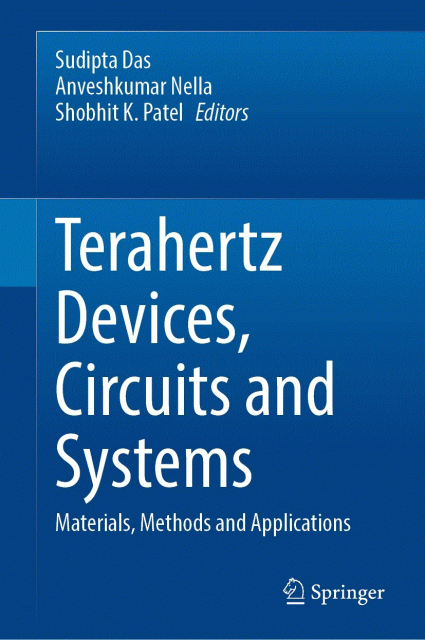 Advances in Signal and Communication Processing for Ultra-High-Speed Terahertz Communications
Advances in Signal and Communication Processing for Ultra-High-Speed Terahertz Communications
Terahertz Devices, Circuits and Systems / Springer
September 27, 2022
Terahertz communication is a new wireless technology that could help address the rapidly future demand for mobile data and high-speed wireless communication. Terahertz transmission, on the other hand, is highly dependent on distance. For short-range transmission, it has its own advantages. For the limited range, this band has the potential to increase data rates to terabits/second. THz band is an appropriate frequency range for electromagnetic nanocommunication, which allows nanosensors to communicate with one another. However, the approaches and techniques developed for lower frequencies (e.g. microwave length) are difficult to apply to THz nanoscale communication technology. The small sizes and constrained capacities of nanodevices place extremely strict limits on available resources. In addition, the peculiarities of the THz channel impose more severe constraints on the THz physical layer implementations. In order to reach Tbps rates for THz communication, it’s crucial for the implementation of novel physical layer techniques, which offer the best trade-offs between low complexity, high capacity, and ultra-low power consumption. In this chapter, we present a complete study and state-of-the-art, covering the key THz physical layer characteristics, including modulations schemes, channel coding algorithms, and non-coherent detection in future terahertz (THz)-band communication systems. Finally, a number of open research issues will be presented, as well as prospective research directions.
See publication
Tags: Emerging Technology, Engineering, Telecom
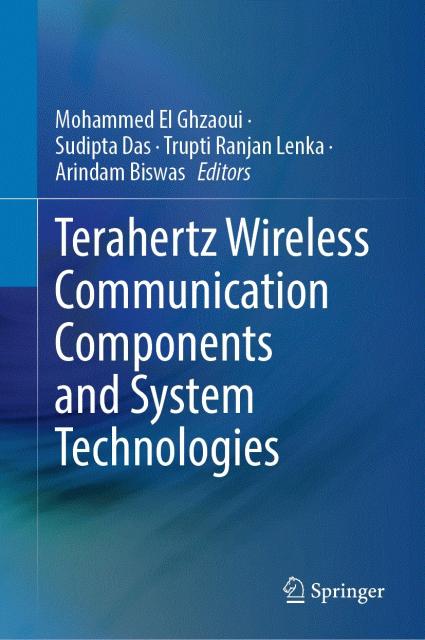 Coding and Modulation for Terahertz
Coding and Modulation for Terahertz
Terahertz Wireless Communication Components and System Technologies/Springer
April 03, 2022
Due to the huger demand for data traffic, today’s network devices face great challenges and require urgent development of a high-speed broadband communications network. Efforts should be made to increase channel capacity. As its proportional to the channel bandwidth, the most effective way to rapidly expand channel capacity is to increase the channel bandwidth and expand the available spectrum. In this context, it is inevitable to switch to the terahertz (THz) band of 0.1–10 THz with correspondent wavelength range of 3 mm at 30 μm, which is an area that has not been thoroughly explored and has a very wide application value and development space. THz is a key enabler of future fifth-generation (5G) and sixth-generation (6) wireless communication systems. It shows great potential to mix an incredibly wide variety of applications and devices with Ultra-high Data Rate rates up to Terabits per second. Despite its characteristics of high-speed transmission, wide bandwidth, and high security, terahertz faces various challenges; including the path loss is very sensitive to water concentration and TX–RX distance. The frequency and distance dependence of terahertz (THz) propagation channel can seriously degrade the Bit Error Rate (BER) performance. In order to reach Ultra-high Data Rate THz Communication, it is imperative to develop novel modulation schemes and waveform designs that provide a good compromise between low complexity, ultra-high throughput, and low energy consumption. In addition, there is a necessity to modify, adapt, and improve conventional Error-Control Coding mechanisms to find the tradeoffs between error correction capabilities, energy consumption and latency, with the main motivation on improving communication reliability for ultra-high-speed wireless THz communication. This chapter mainly presents the principle of terahertz communication and provides the advances in coding and modulation for ultra-high-speed THz communications.
See publication
Tags: 5G, Emerging Technology, Telecom
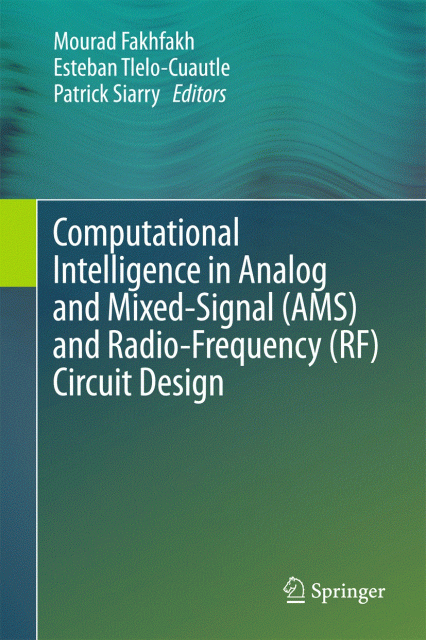 Optimization Methodology Based on IC Parameter for the Design of Radio-Frequency Circuits in CMOS Technology
Optimization Methodology Based on IC Parameter for the Design of Radio-Frequency Circuits in CMOS Technology
Computational Intelligence in Analog and Mixed-Signal (AMS) and Radio-Frequency (RF) Circuit Design /Springer
January 01, 2015
This chapter presents a computational methodology for the design optimization of ultra-low-power CMOS radio-frequency front-end blocks. The methodology allows us to explore MOS transistors in all regions of inversion. The power level is set as an input parameter before we begin the computational process involving other aspects of the design performance. The approach consists of trade-offs between power consumption and other radio-frequency performance parameters. This can help designers to seek quickly and accurately the initial sizing of the radio-frequency building blocks while maintaining low levels of power consumption. A design example shows that the best trade-offs between the most important low-power radio-frequency performances occur in the moderate inversion region.
See publication
Tags: Emerging Technology, Engineering, Telecom
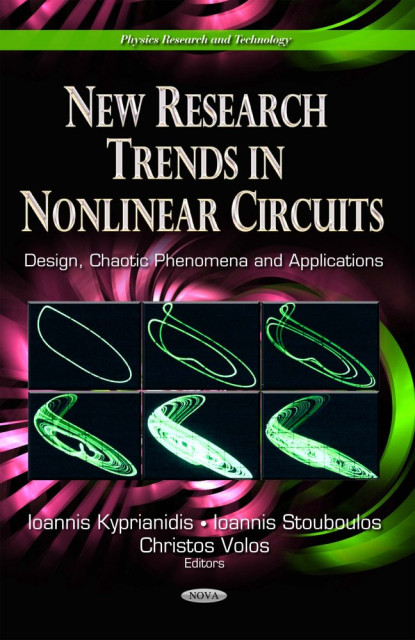 Kalman Filter Variants for Nonlinear Systems – Applications to Synchronization of Chaotic Systems
Kalman Filter Variants for Nonlinear Systems – Applications to Synchronization of Chaotic Systems
New Research Trends in Nonlinear Circuits: Design, Chaotic Phenomena and Applications/Nova Science Publishers
August 01, 2014
The State Estimation Problem for stochastic nonlinear dynamical system in a noisy environment is of central importance in engineering. Furthermore it has a wide range of applications such as control system and chaotic synchronization. The process to obtain the state estimations is called filtering. Kalman Filter (KF) is the optimal Bayesian estimator for linear systems. However, the application of the KF to nonlinear systems can be difficult. Consequently, most existing methods rely on simplifying assumptions to obtain a tractable but approximate solution. This chapter presents and analyses the best known Kalman Filters variants for nonlinear systems, such as Extended Kalman Filter (EKF), Unscented Kalman Filter (UKF) respectively, which have been concluded in synchronization of chaotic systems.
See publication
Tags: Emerging Technology, Engineering, Telecom
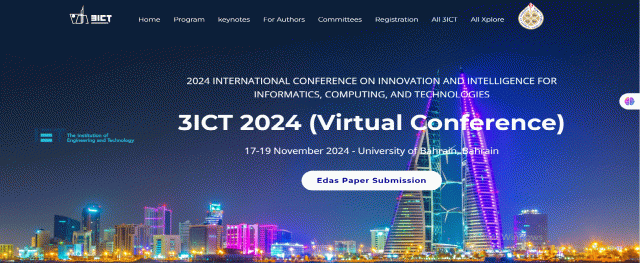 Deep Reinforcement Learning Applied to ORIS-Aided Downlink MU-MIMO VLC Systems
Deep Reinforcement Learning Applied to ORIS-Aided Downlink MU-MIMO VLC Systems
2024 International Conference on Innovation and Intelligence for Informatics, Computing, and Technologies (3ICT)
November 01, 2024
Optical Reconfigurable Intelligent Surfaces (ORIS) has recently gained attention as a promising technology for enhancing the performance of multiuser multiple-input multiple-output (MIMO) visible light communication (VLC) systems. By integrating ORIS with advanced optimization techniques, such as Deep Reinforcement Learning (DRL), significant improvements can be achieved regarding spectral efficiency, energy efficiency (EE), and overall system capacity. This paper proposes a novel approach that employs DRL to optimize both the transmit BF matrix at the transmitter and the phase shift configuration at the ORIS. The proposed method demonstrates significant improvements over conventional optimization algorithms, achieving a performance increase of up to 25% in efficiency during extensive simulations conducted over 800 episodes. This enhanced solution provides greater adaptability for complex indoor MU-MIMO VLC environments, showcasing its effectiveness compared to traditional approaches.
See publication
Tags: 5G, Emerging Technology, Telecom
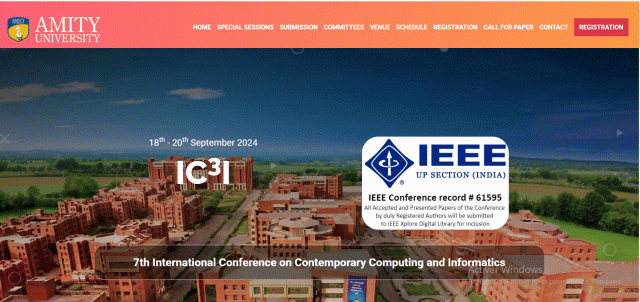 Advanced Ray-Tracing Saleh-Valenzuela Channel Modelling and Characterization for Indoor Terahertz Communication Systems
Advanced Ray-Tracing Saleh-Valenzuela Channel Modelling and Characterization for Indoor Terahertz Communication Systems
2024 7th International Conference on Contemporary Computing and Informatics (IC3I)
September 01, 2024
With the growing demand for advanced wireless communication networks, there is an urgent need for highspeed wireless technologies. The Terahertz (THz) frequency band, ranging from 0.3 to 10 THz, attracts significant attention due to its unique properties, such as high temporal resolution and low absorption, making it promising for telecom advancements. This paper introduces an ultrawideband (UWB) channel model for THz frequency propagation in indoor environments, starting from 0.3 THz. The study examines the propagation path loss by considering factors such as transmitter size, molecular absorption, and attenuation across varying frequencies and distances. The model includes power delay profiles, MIMO, and DFT-s-OFDM-based channel responses, employing a hybrid approach combining the Saleh-Valenzuela model with Raytracing (RT-SV) techniques. This method provides a detailed analysis of line-of-sight path loss, power distribution, and other physical characteristics in THz indoor channels. The simulation results show that this hybrid model improves THz system performance, outperforming traditional stochastic models by better handling temporal and spatial variations that affect frequency loss.
See publication
Tags: 5G, Emerging Technology, Telecom
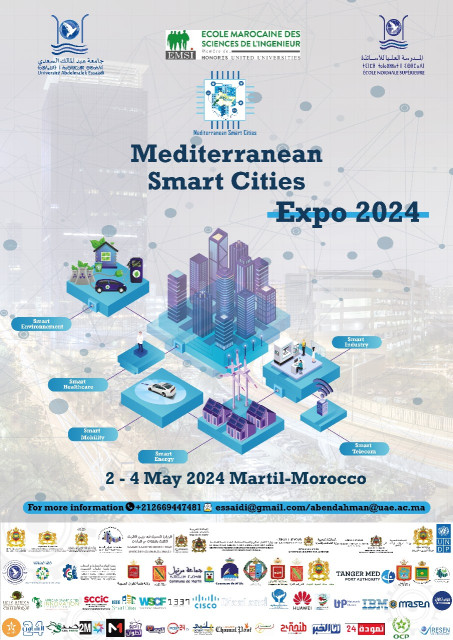 RIS-aided Downlink NOMA MIMO VLC-Based IoT Devices
RIS-aided Downlink NOMA MIMO VLC-Based IoT Devices
2024 Mediterranean Smart Cities Conference (MSCC)
May 01, 2024
Internet of Things (IoT) technology has seen rapid growth, and visible light communications (VLCs) have emerged as a promising communication technology for IoT. However, challenges such as limited coverage area, blockage issues, and the need for efficient multiple-access techniques must be addressed. Additionally, using orthogonal time frequency space (OTFS) and reconfigurable intelligent surfaces (RISs) can potentially enhance IoT performance in low/high-mobility channels and indoor environments. Downlink VLC communication has introduced multiple-input multiple-output (MIMO) and non-orthogonal multiple access (NOMA) techniques, which have been recognized as promising for VLC-IoT systems due to their efficient resource utilization. RISs strategically configure and redirect radio signals, enhancing spectral and energy efficiency performance. This paper presents an adaptative RIS-aided VLC-IoT model based on NOMA-OTFS signals. We formulate a problem maximizing the channel capacity with an optimal solution using an algorithm with low complexity. Our results demonstrate that NOMA-based OTFS modulation has been observed to outperform OFDM in mobility channels, with a high RIS-assisted MIMO VLC-IoT system capacity.
See publication
Tags: 5G, Emerging Technology, Telecom
 A Review of Formal Security Verification of Common Internet of Things (IoT) Communication Protocols
A Review of Formal Security Verification of Common Internet of Things (IoT) Communication Protocols
2023 7th IEEE Congress on Information Science and Technology (CiSt)
December 01, 2023
The Internet of Things (IoT) is characterized by a myriad of communication protocols that enable seamless connectivity among devices. However, the open nature of the internet exposes these communication protocols to various flaws and vulnerabilities, resulting in the necessity for rigorous security verification. In response to this imperative, the literature abounds with research efforts aimed at assessing the security properties of IoT communication protocols using diverse techniques. In this paper, we present a comprehensive overview of these research endeavors, with a specific focus on the utilization of Formal Methods to verify the security of common communication protocols employed in the IoT.
See publication
Tags: IoT, Security
 A Review on Visible Light Communication System for 5G
A Review on Visible Light Communication System for 5G
International Conference on Advanced Technologies for Humanity ICATH 2022
January 01, 2022
Visible-Light Communications (VLC) is an emerging wireless communication technology, which appears as a promising solution for very high speed 5G wireless networks in short-range communications. Is based on Intensity Modulation (IM). The implementation of VLC is based on Intensity Modulation/ Direct Detection (IM/DD) where the signal is directly modulated onto the instantaneous optical carrier power and direct detection-based photo-detector is used to generate an electrical current that is directly proportional to incident light power. The incident light, on the other hand carries no just the data signal but is also noise. In this paper, the proposed VLC-based signal transmission system model using IM/DD is presented. The injection current is modulated by a NRZ binary pseudo-random bit sequence. At the receiver, the photodiode produces a noisy electrical current which is proportional to the input optical intensity.
See publication
Tags: 5G, Emerging Technology, Telecom
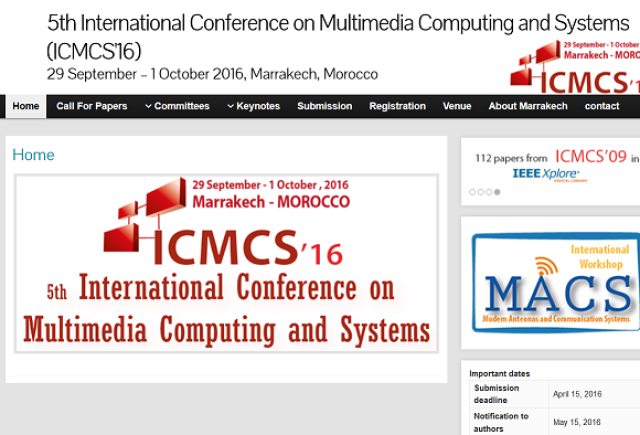 On Soft Combined Turbo Codes performance over Rayleigh fading channel
On Soft Combined Turbo Codes performance over Rayleigh fading channel
2016 5th International Conference on Multimedia Computing and Systems (ICMCS)
September 01, 2016
Expectations and requirements for wireless communication systems continue to grow rapidly. Reliability is one of the most challenging criterions. Soft combined turbo codes technique aims to improve the error correction capability of turbo codes by using soft combining principle, at bit level, inside the turbo decoder. In particular, this approach is based on weight factors which are key elements that impact the overall system's performance. In this paper, we evaluate the performance of soft combined turbo codes for Rayleigh flat fading channel and Max-Log-MAP decoding algorithm. Especially, we analyze the variation of the weight factors in order to obtain the associated optimal values that provide the minimum error rate. Simulation results show that the optimal weight factor associated to the extrinsic information previously stored increases as Energy per bit to Noise power spectral density ratio (Eb/No) decreases. Also, they demonstrate that soft combined turbo codes solution performs far better than the conventional scheme in fading environments.
See publication
Tags: 5G, Emerging Technology, Telecom
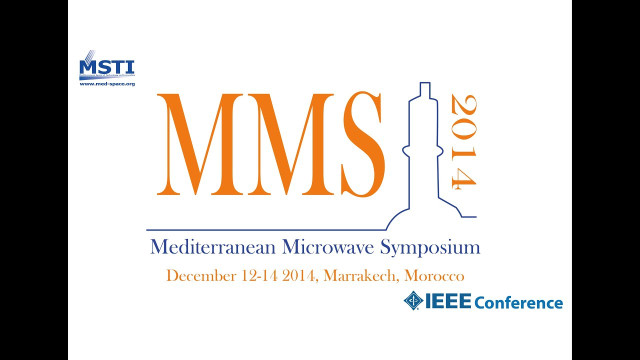 A flexible 3G WebService based gateway for wireless sensor networks in support of remote patient monitoring systems
A flexible 3G WebService based gateway for wireless sensor networks in support of remote patient monitoring systems
2014 Mediterranean Microwave Symposium (MMS2014)
December 01, 2014
Wireless sensor networks (WSN) have attracted an increasing attention, therefore, the number of WSN deployments is expected to grow rapidly in the near future. Sensors can be deployed in various environments to monitor and collect information. Most current research is interests in the application layer to develop a WSN with various applications. In this paper we design an application-layer approach for a WebService Gateway to interact with WSN. In our proposed architecture, the gateway manages the service consumption. This architecture intended to support heterogeneous WSN protocols.
See publication
Tags: Emerging Technology, Health and Safety, HealthTech
Performance evaluation of AMC turbo coded OFDM for 3GPP Long Term Evolution downlink system
2012 International Conference on Multimedia Computing and Systems
May 01, 2012
This paper presents a performance evaluation of OFDM LTE downlink physical layer according to the latest 3GPP specifications. Particularly, adaptive modulation and coding (AMC) is described and analyzed. This is in conjunction with the turbo decoding algorithm Max-Log-Maximum A Posteriori (Max-Log-MAP) used in soft input soft output (SISO) decoders. The performance analysis is carried out in terms of bit error rate (BER) and throughput by varying parameters such as signal to noise ratio (SNR), modulation schemes, coding rates and decoding iterations number.
See publication
Tags: 5G, Emerging Technology, Telecom
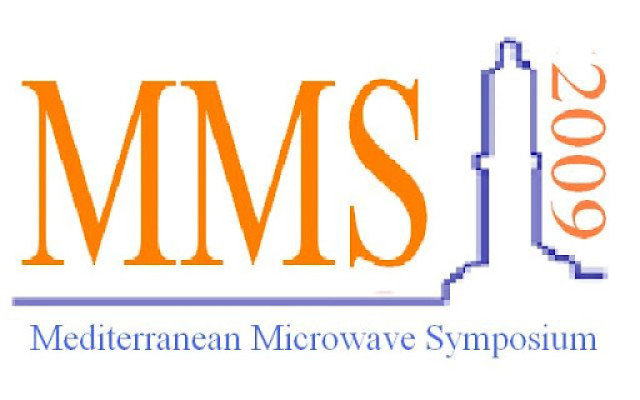 Study and proposal of a mapping between the classes of 3G services and DiffServ model for IP/MPLS transport network
Study and proposal of a mapping between the classes of 3G services and DiffServ model for IP/MPLS transport network
2009 Mediterrannean Microwave Symposium (MMS)
February 01, 2010
The establishment of all-IP architecture is today, a major challenge to many telecommunications operators. This is a necessary passage towards the world of simplicity and convergence offered by new technologies and those to come. In this article, we show that the current evolution of communications networks tends towards the adoption of IP technology and QoS support from end to end. In this context, we demonstrate that IP/MPLS networks need to have a QoS architecture sufficiently mature to support the management of priority in terms of delay, jitter and loss rate required by the services. Thus, we propose a mapping between the classes of services 3G and the DiffServ model for transport IP/MPLS network, and prove the excellence of quality guaranteed network.
See publication
Tags: Emerging Technology, Engineering, Telecom
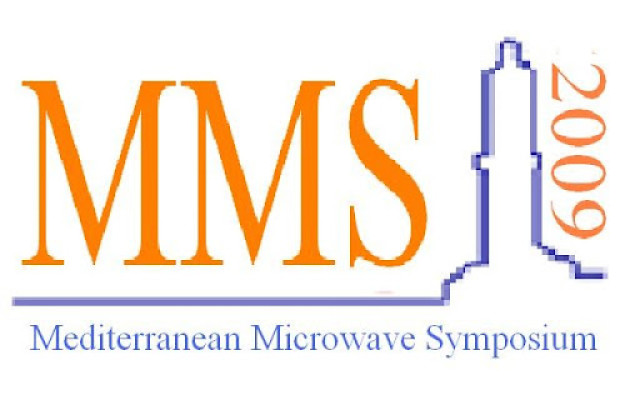 Multi-stage PIC receiver with decision thresholds over rayleigh fading channel
Multi-stage PIC receiver with decision thresholds over rayleigh fading channel
2009 Mediterrannean Microwave Symposium (MMS)
November 01, 2009
Parallel interference cancellation (PIC) is a family of low complexity multi-user detection methods for DS/CDMA systems. The performance of the multistage PIC depends on the decision function used in the interference cancellation. In this paper, we propose to provide the performance of PIC receiver using Xha function `clipping' with respect to decision threshold value. The decision threshold determines how much MAI is to be cancelled with hard decision and high probability. Otherwise, we used a soft bit decision to cancel only the interference of unreliable users form the received signal. This approach is original compared to PIC receiver with decision thresholds using null zone hard decision. It is shown that the proposed detector performs well under realistic conditions, particularly in the case of error optimisation of decision threshold value.
See publication
Tags: Emerging Technology, Telecom
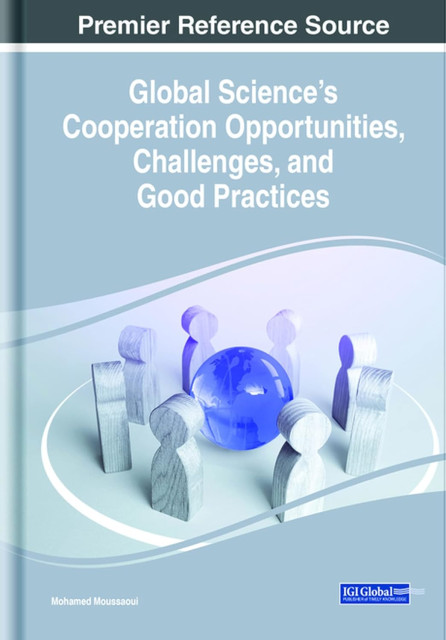 Efficient n-M-PAWM hybrid modulation scheme for high data transmission in visible light communication system
Efficient n-M-PAWM hybrid modulation scheme for high data transmission in visible light communication system
e-Prime - Advances in Electrical Engineering, Electronics and Energy
February 12, 2025
Visible-Light Communications (VLC) is a new wireless communication technology, which has attracted particular attention as a promising solution for very high speed 5G, and 6G wireless networks in indoor environments. Intensity modulation (IM) is considered as the most appropriate modulation technique for VLC. This paper proposes to study a visible light communication (VLC) system with intensity modulation and direct detection (IM/DD). A channel modulation scheme is designed and encoded either in L-level pulse amplitude modulation (PAM), pulse position modulation (PPM), or pulse width modulation (PWM). In order to improve transmission efficiency, Hybrid Pulse Amplitude Position Modulation (PAPM) and Pulse Position Width Modulation (PPWM) are proposed in optical wireless communication (OWC), especially in VLC technologies. In this Paper, we propose a novel combination between PAM and PWM modulation schemes, called Pulse Amplitude Width Modulation (PAWM). The proposed modulation decreases the bit error ratio (BER) of VLC system, approximately
at Signal Noise Ratio (SNR) equal 12dB, and increases the system's transmission data rate to
at BER
for
. The normalized power and bandwidth requirements will be developed. The results show, from number
pulses per symbol, the transmission information rate ratio (IRR) is increased to
. Furthermore, a study of the Peak-to-Average Power Ratio (PAPR) for various hybrid modulations is conducted. Finally, the analytical expressions for power requirements and bandwidth, PAPR, and IRR expression of the proposed modulation scheme are investigated. The results show that the proposed hybrid modulation scheme could lower the BER and increase the data rate, and demonstrates the high potential implementation for VLC technology.
See publication
Tags: 5G, Emerging Technology, Telecom
 Performance Evaluation of a Smart Remote Patient Monitoring System based Heterogeneous WSN
Performance Evaluation of a Smart Remote Patient Monitoring System based Heterogeneous WSN
International Journal of Advanced Computer Science and Applications(ijacsa)
February 12, 2025
This paper investigates the development of a remote patient monitoring system based on WBAN Wireless Body Sensor Network. Thus, the main purpose of such design is to interconnect heterogeneous sensor networks not equipped with the HTTP / TCP / UDP stack. A novel gateway architecture is proposed to ensure interoperability and facilitate seamless access to data from different types of body sensors that communicate via different technologies, namely, Bluetooth, IEEE802.15.4 / Zigbee and IEEE 802.15.6. Moreover, an application-layer approach for a Web Service Gateway is also developed for interaction with heterogeneous WSN. The Gateway communicates with the server via the SOAP protocol and manages the service consumption. Since the proposed platform is targeted to monitor the patient health status, a preliminary link test between the sensor and the server is unavoided in terms of quality of service. To evaluate the performances of our proposed platform, a results comparison was conducted based on different communication scenarios (3G, ADSL, and LOCAL). Finding results illustrate the (QoS) constraints, namely, Latency, Packet loss and Jitter.
See publication
Tags: Emerging Technology, Healthcare, HealthTech
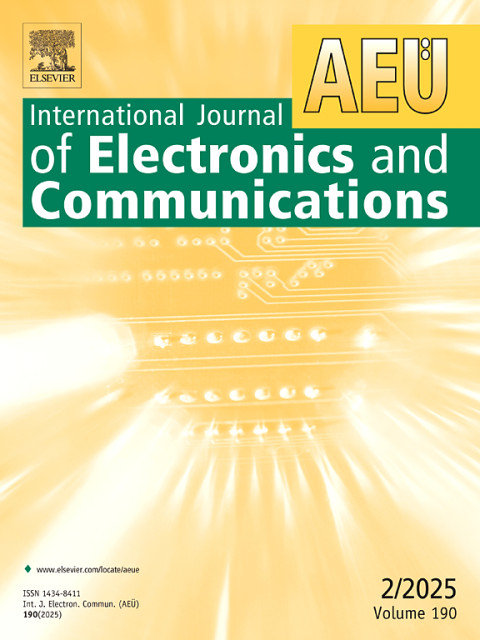 Real-time FPGA implementation for data streaming in visible light communication systems using NOMA-based (2-4)-array PAWM scheme
Real-time FPGA implementation for data streaming in visible light communication systems using NOMA-based (2-4)-array PAWM scheme
AEU - International Journal of Electronics and Communications
February 11, 2025
In indoor visible light communication (VLC) systems, pulse amplitude width modulation (PAWM) is emerging as a novel baseband modulation technique. PAWM enables the transmission of more bits per symbol by combining pulse amplitude modulation (PAM) with variations in pulse width. This modulation technique requires fewer optical pulses than traditional methods like multilevel modulation, on-off keying, pulse position modulation (PPM), and pulse width modulation (PWM), making it highly efficient. We propose a PAWM-based non-orthogonal multiple access (NOMA) schemes for VLC systems, which offers high data rates, low power consumption, and massive connectivity, making it ideal for optical Internet of Things (OIoT) applications. However, like other NOMA-enabled systems, PAWM faces challenges from inter-symbol interference due to the multipath effect, especially under higher-order modulations. To assess the performance of VLC-NOMA systems using PAWM, we analyze the theoretical bit error probability (BEP) for decoding symbols in a noisy VLC channel. Our evaluation, focusing on scenarios with high signal-to-noise ratios (SNR), is supported by real-time testing using a field-programmable gate array (FPGA) platform. Simulation results validate our analytical model, showing that (2-4)-array PAWM modulation significantly reduces BER disparity among NOMA users, enhancing user fairness. Experimental findings demonstrate that our proposed modulation technique achieves a communication distance of 2.5 m with low BER, high modulation efficiency, and reliability, making it suitable for high-performance indoor VLC systems.
See publication
Tags: 5G, Emerging Technology, Engineering
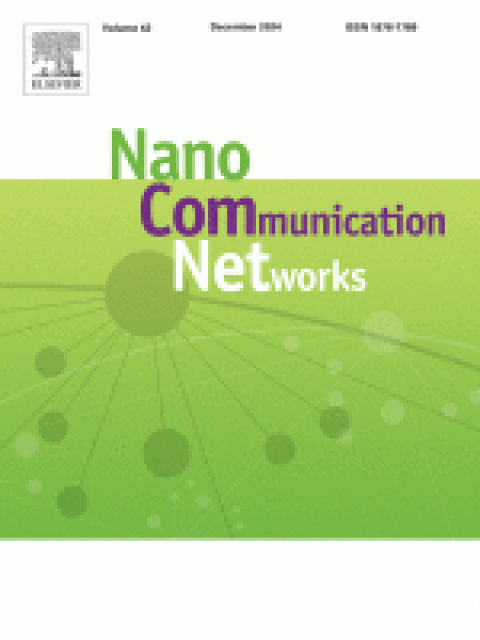 RT-SVM: Channel modeling and analysis for indoor terahertz communication scenarios
RT-SVM: Channel modeling and analysis for indoor terahertz communication scenarios
Nano Communication Networks
February 11, 2025
Considering the increasing demands for wireless communication networks and information system applications, the wireless sector must meet the pressing requirement for high-speed technological advances. The terahertz (THz) frequency band, spanning 0.3 to 10 THz, is of significant interest in current technological innovations and academic research in telecommunications. The THz frequency band has unique properties, including high time-resolving power (femtosecond) and low absorption. This paper proposes a THz propagation ultra-wideband (UWB) channel model and coding scheme for indoor environments starting from 0.3 THz. First, we investigated the propagation path loss model by considering the effects of transmitter dimensions, molecular absorption, and attenuation as functions of frequency and distance. We developed models for power propagation delay, multiple input multiple output (MIMO) systems and discrete Fourier transform spread orthogonal frequency division multiplexing (DFT-s-OFDM) response channels. Using the standard Saleh–Valenzuela model combined with Ray-tracing (RT-SVM), we studied the transmission of THz signals in indoor scenarios. We introduced physical parameters relevant to the THz indoor channel, such as line-of-sight (LoS) path loss, power distributions, temporal and spatial properties, and associations between THz multipath properties. These parameters were integrated with the RT-SVM channel model and applied to THz indoor communication. Numerical simulations demonstrate that the proposed hybrid channel model enhances THz system performance and outperforms traditional statistical and geometric-based stochastic channel models in terms of temporal and spatial dimensions, contributing to frequency loss variations.
See publication
Tags: 5G, Emerging Technology, Engineering
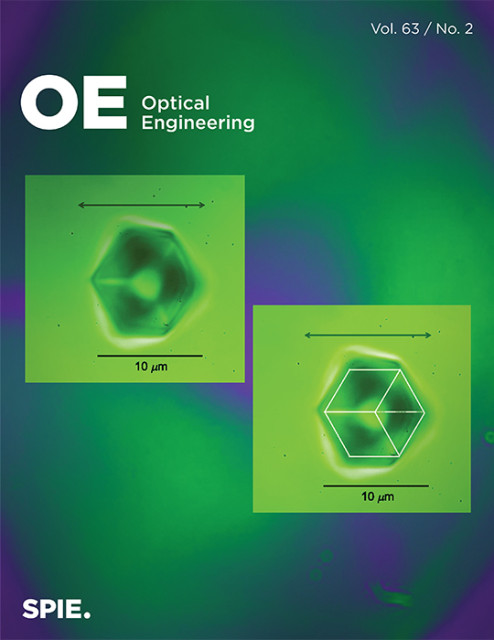 Efficient downlink MU-MIMO VLC systems with NOMA-OTFS modulation for indoor applications
Efficient downlink MU-MIMO VLC systems with NOMA-OTFS modulation for indoor applications
Optical Engineering
February 23, 2024
In optical wireless communication (OWC), visible light communication (VLC) has shown great potential and attractive performance in indoor environments. However, the limited modulation bandwidth of VLC technologies poses performance restrictions. We propose a new approach for downlink communication utilizing multiple-input multiple-output (MIMO) technology. Our approach integrates non-orthogonal multiple access (NOMA) with orthogonal time frequency space modulation (OTFS) to improve transmission performance, particularly for low mobility when using NOMA-OTFS. Our proposed work focuses on the crucial stage of NOMA with successive interference cancellation (SIC), which involves equalization using efficient schemes, such as decision feedback equalizer (DFE), frequency-domain zero-forcing linear equalizer, and minimum mean square error-SIC at the receiver. Through extensive experimentation, it is observed that the DFE with SIC outperforms other equalizers, demonstrating a lower outage probability and a better BER. The effectiveness of the optimized analytical algorithm for ML-based downlink NOMA-OTFS modulation is confirmed through theoretical BER validation. Moreover, the simulation findings indicate that, in a multi-user (MU) scenario, the proposed NOMA-OTFS exhibits a high performance compared with traditional NOMA combined with orthogonal frequency division multiplexing in downlink MU-MIMO VLC systems. This performance advantage is observed for both MIMO and multiple-input single-output multiplexing techniques with power allocation of the users, specifically in terms of BER improvement and peak-to-average-power ratio reduction.
See publication
Tags: 5G, Emerging Technology
 The hybrid pulse amplitude width modulation scheme: high efficiency technique for dimmable VLC systems
The hybrid pulse amplitude width modulation scheme: high efficiency technique for dimmable VLC systems
Journal of Optical Communications
September 12, 2023
Visible-light communications (VLC) is an environmentally friendly optical wireless communication (OWC) technology that operates in the 400–800 THz frequency band. It is currently a critical technology for 5G and 6G wireless indoor applications due to its high data rates, low latency, and superior reliability. Intensity modulated direct detection (IM/DD) is widely used in VLC systems. A channel modulation scheme is designed using L-level pulse modulation techniques such as on–off keying (OOK), amplitude modulation (PAM), position modulation (PPM), and the width modulation (PWM). We introduce a novel hybrid modulation scheme n-M-PAWM based on both PAM and PWM schemes to improve throughput and significantly increase power and spectrum efficiency in VLC communication systems. The performance of our proposed hybrid n-M-PAWM scheme is studied in several aspects, including the number of transmitted bits per symbol, average BER, information rate ratio (IRR), PAPR, bandwidth, and power requirement. In an extremely noisy VLC system, the proposed 2-M-PAWM modulation outperforms both PPWM and PAPM modulation schemes due to its better BER performances. Additionally, we examine the performance of the VLC system in terms of spectral efficiency (SE) using our proposed PAWM-based dimming control system by varying the number of pulses transmitted during one symbol period. We demonstrate through simulation results that our PAWM-based dimming control system performs significantly better compared to the other pulse modulation schemes. All results of this research show that our proposed hybrid PAWM modulation scheme has high potential for VLC technology in indoor and noisy environments.
See publication
Tags: 5G, Emerging Technology, Telecom
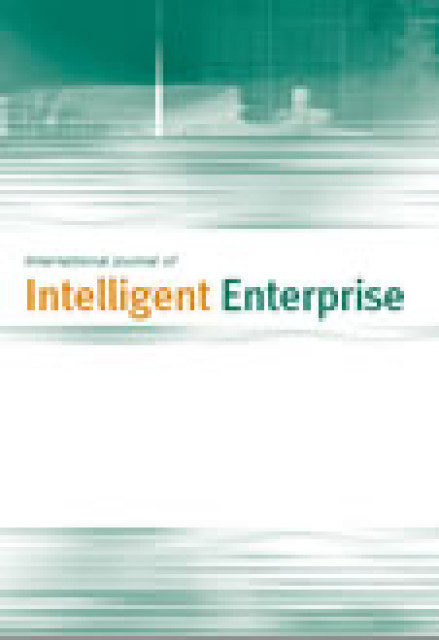 A smart architecture design for health remote monitoring systems and heterogeneous wireless sensor network technologies: a machine learning breathlessness prediction prototype
A smart architecture design for health remote monitoring systems and heterogeneous wireless sensor network technologies: a machine learning breathlessness prediction prototype
International Journal of Intelligent Enterprise
July 15, 2019
In this paper, we propose a remote patient monitoring architecture based on WBAN wireless body sensor network for breathlessness prediction using machine learning mechanism, we develop a new gateway architecture able to interconnect heterogeneous sensor networks not equipped with the HTTP/TCP/UDP stack. To ensure interoperability and facilitate seamless access to data from different types of body sensors that communicates via multiple technologies. We have designed an application-layer approach for a web service gateway to interact with heterogeneous WSN. The gateway manages the service consumption and communicates with the server via the SOAP protocol. The proposed platform targeted to monitor and process patient health data. An improved machine learning algorithm is used for patient health status prediction to perform patient self-training models based on k-means algorithm. For our platform evaluation we study the gateway power consumption then we investigate the communication delay between the gateway and the server over three communication scenarios (3G, ADSL, LOCAL).
See publication
Tags: Engineering, Healthcare, HealthTech
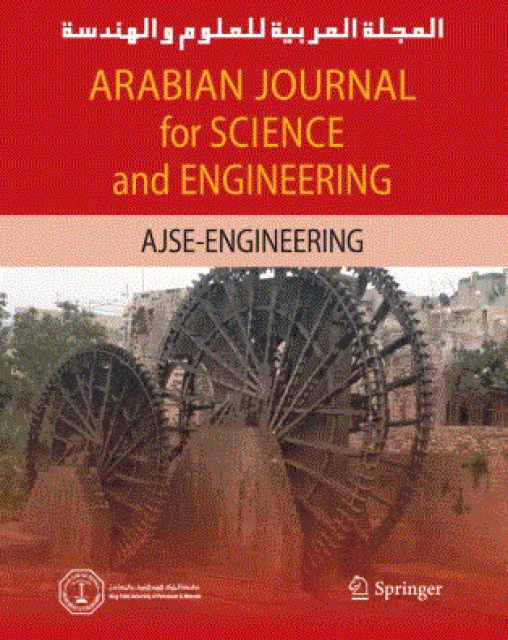 Design Optimization Methodology Based on Inversion Coefficient Parameter for CMOS RF Circuits
Design Optimization Methodology Based on Inversion Coefficient Parameter for CMOS RF Circuits
Arabian Journal for Science and Engineering
November 09, 2014
This paper proposes a design methodology for ultra-low-power CMOS radiofrequency (RF) transceivers building blocks. The key parameters of this methodology are the inversion coefficient of CMOS transistor and the extracted equations of passives components introduced in the architecture of the RF building block. The approach of proposed methodology consists of a trade-off between the power consumption and the others RF parameters such as gain, linearity, noise and bandwidth. Two analog RF design examples have been studied in details in order to clarify the design flow and effectiveness of the proposed methodology. A down-conversion mixer and a voltage-controlled oscillator have been implemented in CMOS technology; the obtained results have been compared to others of the state of the art.
See publication
Tags: Emerging Technology, Engineering, Telecom
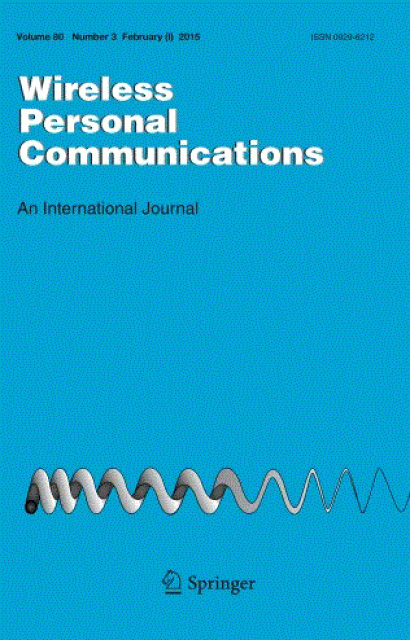 Improved Turbo Decoding Using Soft Combining Principle
Improved Turbo Decoding Using Soft Combining Principle
Wireless Personal Communications
April 29, 2014
One great challenge in wireless communication systems is to ensure reliable communications. Turbo codes are known by their interesting capabilities to deal with transmission errors. In this paper, we present a novel turbo decoding scheme based on soft combining principle. Our method improves decoding performance using soft combining technique inside the turbo decoder. Working on Max-Log-Maximum a Posteriori (Max-Log-MAP) turbo decoding algorithm and using an Additive White Gaussian Noise (AWGN) channel model and 16 Quadrature Amplitude Modulation (16QAM), simulation results show that the suggested solution is efficient and outperforms the conventional Max-Log-MAP algorithm in terms of Bit Error Rate (BER). The performance analysis is carried out in terms of BER by varying parameters such as the Energy per bit to Noise power spectral density ratio (
), and decoding iterations number. We call our proposed solution Soft Combined Turbo Codes.
See publication
Tags: 5G, Emerging Technology, Telecom
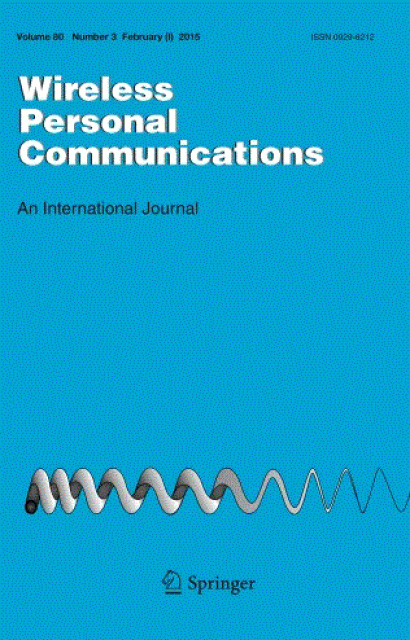 Another Approach for Partial Parallel Interference Cancellation
Another Approach for Partial Parallel Interference Cancellation
Wireless Personal Communications
October 27, 2006
In this paper, a technique for improving parallel interference cancellation (PIC) receivers with linear estimators is studied in a CDMA system under power control and near-far case. By multiplying the received signal for each user in early stages by a factor superior than unity, the proposed technique significantly reduces the harmful impact of the bias upon BER performance and requires only vector implementation under power control. In order to make the analysis more tractable, the proposed bias mitigation technique is described for a synchronous multi-user communication scenario with binary signalling, non-orthogonal multiple access interference in an additive white Gaussian noise channel.
See publication
Tags: Emerging Technology, Telecom

 Emerging Trends and Technologies in Water Management and Conservation
Emerging Trends and Technologies in Water Management and Conservation
 Global Science’s Cooperation Opportunities, Challenges, and Good Practices
Global Science’s Cooperation Opportunities, Challenges, and Good Practices
 Les techniques de détection Multi-Utilisateurs pour les systèmes CDMA: Annulation d'interférences pour les Systèmes Mobiles 3G
Les techniques de détection Multi-Utilisateurs pour les systèmes CDMA: Annulation d'interférences pour les Systèmes Mobiles 3G
 Frameworks for Pedagogy, Methodologies, and Technologies in Distance Learning Processes
Frameworks for Pedagogy, Methodologies, and Technologies in Distance Learning Processes
 Advanced Retransmission Protocols for Critical Wireless Communications
Advanced Retransmission Protocols for Critical Wireless Communications
 Digital Water Transformation: Technologies, Opportunities, and Challenges
Digital Water Transformation: Technologies, Opportunities, and Challenges
 Water Governance and Management in Morocco: Towards a Sustainable and Ecological Model
Water Governance and Management in Morocco: Towards a Sustainable and Ecological Model
 Building Bridges Through Science Diplomacy in the Mediterranean: Speaking a Common Language
Building Bridges Through Science Diplomacy in the Mediterranean: Speaking a Common Language
 Rethinking Natural Resource Development: A Sustainable and Equitable Approach to North-South Relations
Rethinking Natural Resource Development: A Sustainable and Equitable Approach to North-South Relations
 High-Performance Metric of Graphene-Based Heterojunction LEDs and PDs in Visible Light Communication Systems
High-Performance Metric of Graphene-Based Heterojunction LEDs and PDs in Visible Light Communication Systems
 Advances in Signal and Communication Processing for Ultra-High-Speed Terahertz Communications
Advances in Signal and Communication Processing for Ultra-High-Speed Terahertz Communications
 Coding and Modulation for Terahertz
Coding and Modulation for Terahertz
 Optimization Methodology Based on IC Parameter for the Design of Radio-Frequency Circuits in CMOS Technology
Optimization Methodology Based on IC Parameter for the Design of Radio-Frequency Circuits in CMOS Technology
 Kalman Filter Variants for Nonlinear Systems – Applications to Synchronization of Chaotic Systems
Kalman Filter Variants for Nonlinear Systems – Applications to Synchronization of Chaotic Systems
 Deep Reinforcement Learning Applied to ORIS-Aided Downlink MU-MIMO VLC Systems
Deep Reinforcement Learning Applied to ORIS-Aided Downlink MU-MIMO VLC Systems
 Advanced Ray-Tracing Saleh-Valenzuela Channel Modelling and Characterization for Indoor Terahertz Communication Systems
Advanced Ray-Tracing Saleh-Valenzuela Channel Modelling and Characterization for Indoor Terahertz Communication Systems
 RIS-aided Downlink NOMA MIMO VLC-Based IoT Devices
RIS-aided Downlink NOMA MIMO VLC-Based IoT Devices
 A Review of Formal Security Verification of Common Internet of Things (IoT) Communication Protocols
A Review of Formal Security Verification of Common Internet of Things (IoT) Communication Protocols
 A Review on Visible Light Communication System for 5G
A Review on Visible Light Communication System for 5G
 On Soft Combined Turbo Codes performance over Rayleigh fading channel
On Soft Combined Turbo Codes performance over Rayleigh fading channel
 A flexible 3G WebService based gateway for wireless sensor networks in support of remote patient monitoring systems
A flexible 3G WebService based gateway for wireless sensor networks in support of remote patient monitoring systems
 Study and proposal of a mapping between the classes of 3G services and DiffServ model for IP/MPLS transport network
Study and proposal of a mapping between the classes of 3G services and DiffServ model for IP/MPLS transport network
 Multi-stage PIC receiver with decision thresholds over rayleigh fading channel
Multi-stage PIC receiver with decision thresholds over rayleigh fading channel
 Efficient n-M-PAWM hybrid modulation scheme for high data transmission in visible light communication system
Efficient n-M-PAWM hybrid modulation scheme for high data transmission in visible light communication system
 Performance Evaluation of a Smart Remote Patient Monitoring System based Heterogeneous WSN
Performance Evaluation of a Smart Remote Patient Monitoring System based Heterogeneous WSN
 Real-time FPGA implementation for data streaming in visible light communication systems using NOMA-based (2-4)-array PAWM scheme
Real-time FPGA implementation for data streaming in visible light communication systems using NOMA-based (2-4)-array PAWM scheme
 RT-SVM: Channel modeling and analysis for indoor terahertz communication scenarios
RT-SVM: Channel modeling and analysis for indoor terahertz communication scenarios
 Efficient downlink MU-MIMO VLC systems with NOMA-OTFS modulation for indoor applications
Efficient downlink MU-MIMO VLC systems with NOMA-OTFS modulation for indoor applications
 The hybrid pulse amplitude width modulation scheme: high efficiency technique for dimmable VLC systems
The hybrid pulse amplitude width modulation scheme: high efficiency technique for dimmable VLC systems
 A smart architecture design for health remote monitoring systems and heterogeneous wireless sensor network technologies: a machine learning breathlessness prediction prototype
A smart architecture design for health remote monitoring systems and heterogeneous wireless sensor network technologies: a machine learning breathlessness prediction prototype
 Design Optimization Methodology Based on Inversion Coefficient Parameter for CMOS RF Circuits
Design Optimization Methodology Based on Inversion Coefficient Parameter for CMOS RF Circuits
 Improved Turbo Decoding Using Soft Combining Principle
Improved Turbo Decoding Using Soft Combining Principle
 Another Approach for Partial Parallel Interference Cancellation
Another Approach for Partial Parallel Interference Cancellation
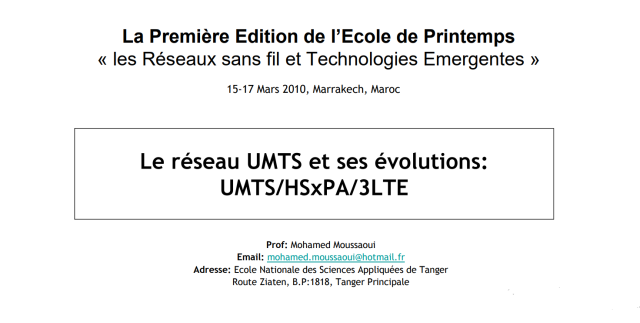 Réseau UMTS et ses évolutions: UMTS/HSxPA/3LTE
Réseau UMTS et ses évolutions: UMTS/HSxPA/3LTE
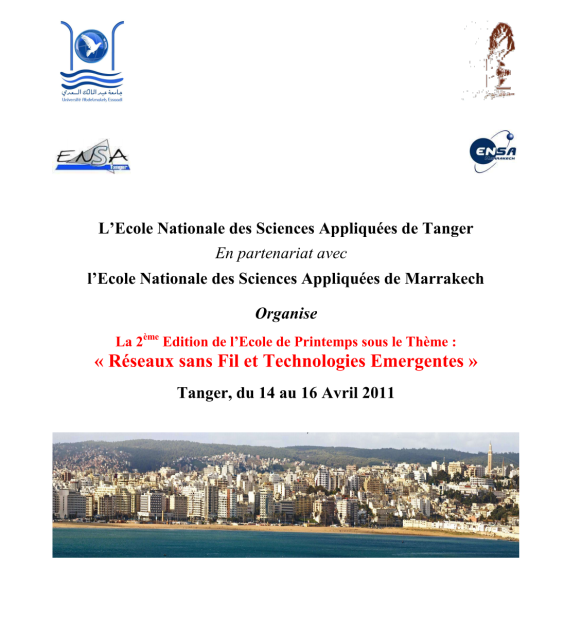 Technologies radio avancées, diversité et optimisation
Technologies radio avancées, diversité et optimisation
 Réseau UMTS et ses évolutions: UMTS/HSxPA/3LTE
Réseau UMTS et ses évolutions: UMTS/HSxPA/3LTE Advanced Retransmission Protocols for Critical Wireless Communications
Advanced Retransmission Protocols for Critical Wireless Communications Frameworks for Pedagogy, Methodologies, and Technologies in Distance Learning Processes
Frameworks for Pedagogy, Methodologies, and Technologies in Distance Learning Processes